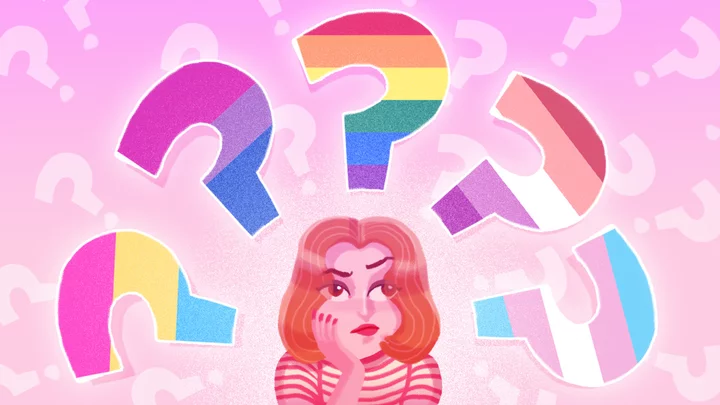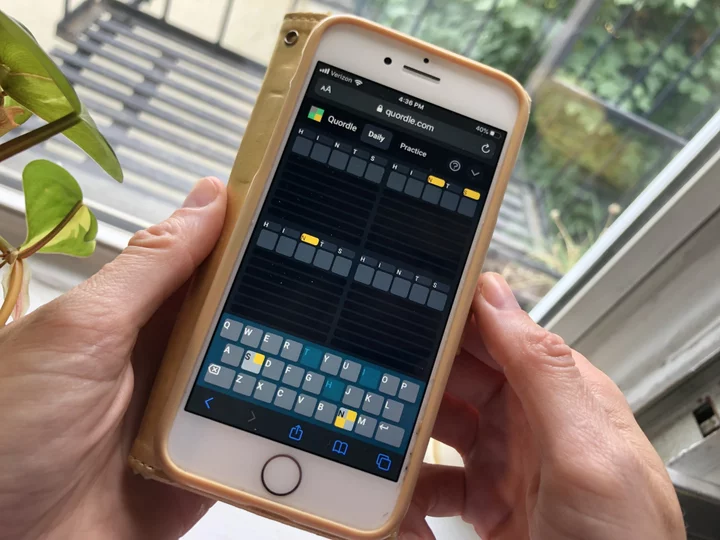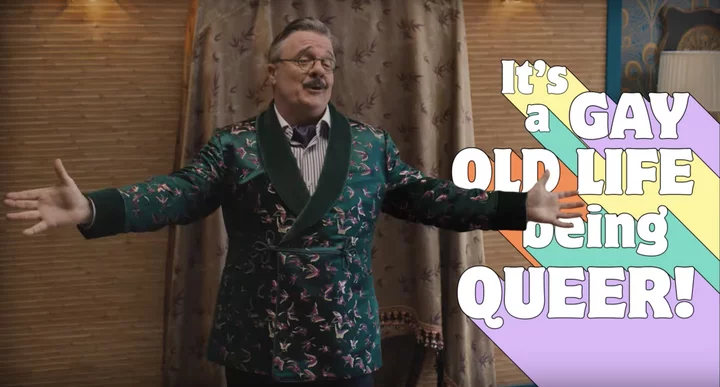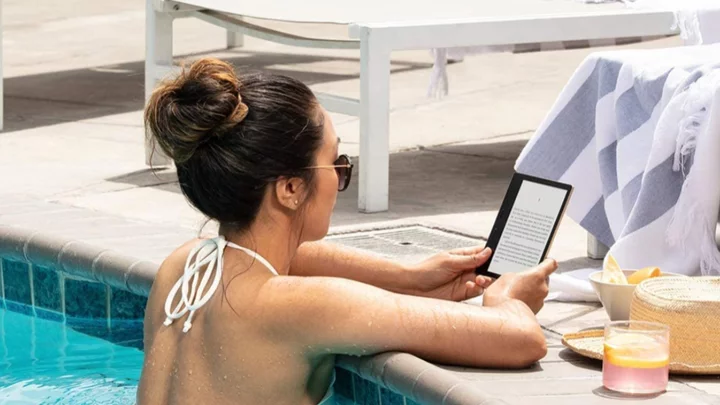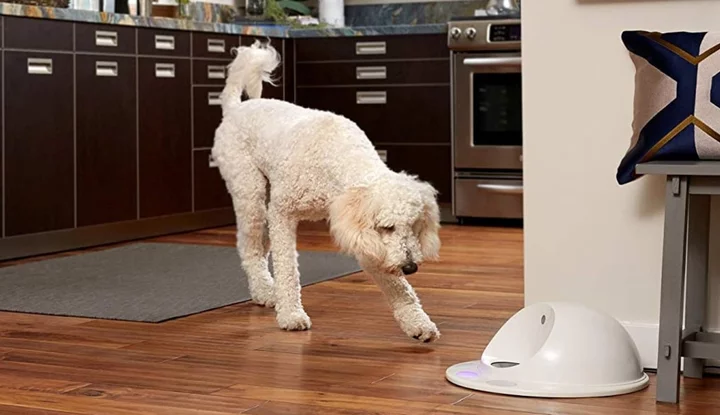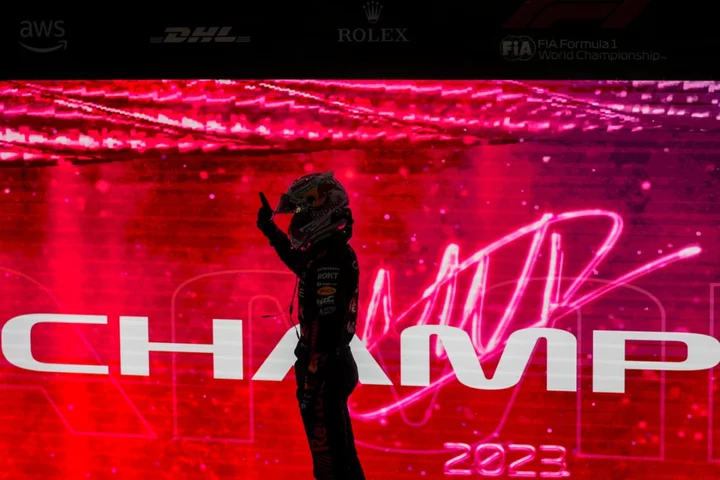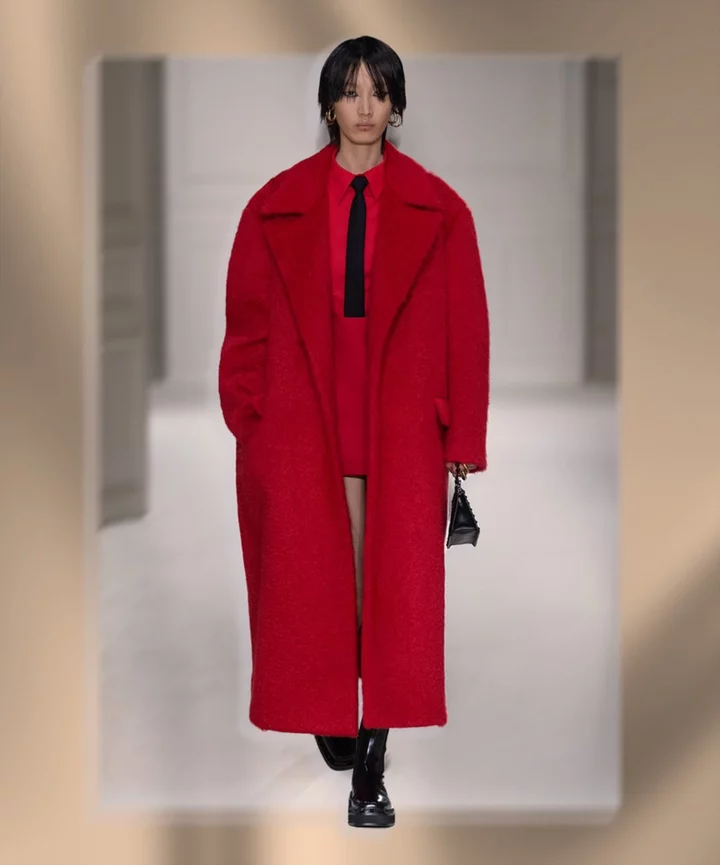In February 2020, an absolute shitstorm exploded online when HBO Max (now Max) announced that actress Jameela Jamil would judge its upcoming vogueing competition show Legendary.
Cries on Twitter claimed that someone outside the house-ballroom scene, particularly someone who is not black and queer, should not judge such a competition. Jamil, for her part, responded by coming out as queer on Twitter and the discourse shifted. In addition to addressing valid questions about Jamil’s qualifications to judge house-ballroom, some claimed that Jamil was not really queer — or that she wasn't somehow "queer enough."
It was an online mess that, while not entirely new, reopened old wounds within the queer community and resurfaced anxieties many, including myself, already felt. How queer do you have to be to be "queer enough" for your community? And who gets to decide? And why do such exclusionary ideas fester in a community known for tolerance, anyway?
Jamil later said that she had chosen the "most inappropriate time" to come out, but the damage had been done. (There have also been recent rumors about her lying about her illnesses and having Munchausen's — but that’s a whole other controversy.) The internet had become a flurry of discussion about who can judge ballroom and, more insidiously, a discussion of who is and is not queer enough.
I know this debate well, but it had previously existed for me mostly internally. I am bisexual and have dated both men and women, but I still struggle with wondering whether I am queer enough for the LGBTQ community, given my appearance ("straight-passing") and the fact that I am not monosexually gay.
Other queer people have the same anxiety I do and it may be more common than I thought.I knew, logically, that I was not alone, but I’ve rarely voiced these concerns for fear of the backlash; that people would say I must be straight or else I wouldn't have such fears.
The criticism that sparked Jamil’s coming out ignited a public conversation that solidified my anxiety. It also revealed another truth: Other queer people have the same anxiety I do, and it may be more common than I thought.
"The situation and its media coverage has honestly inspired a lot of feelings in me," said Mary, a bisexual 25-year-old I spoke to, who asked to go by first name only for privacy reasons. Mary described herself as "semi-closeted," and she said that people saying Jamil needed to categorize herself made her uneasy. "It’s hard for me to see this in a clear-cut way because I am unsettled by the unsatisfied masses who seemingly want her to apply a label to herself."
SEE ALSO: The best dating apps for bisexual people: Where to meet people who get itMary’s friends and her fiancé know she is bisexual, but her family does not. "It’s hard to watch someone who is in the public eye be boxed into a corner to apply a specific term to herself ... because I worry the same would happen to me if I outed myself to my family," Mary said. "Seeing that kind of pushback with Jameela makes me antsy; I think it could happen to me too. Or anyone."
A bi woman I spoke to — who wished to remain anonymous for privacy reasons — was alarmed by the charges of Jamil not being queer enough. "It has been shocking to see how much this has brought people to explicitly say being bisexual doesn’t make you queer enough," she told me over Twitter DM.
Given the pervasiveness of this anxiety, and the discord it sows within the queer community, I set out to uncover where it came from — and what we can do about it.
Dressing 'queer' versus straight-passing
Appearance has a lot to do with this. This is because every group — even countercultural ones — has its own set of norms members may feel pressured to adhere to. "Social psychology predicts that, once a queer person joins a group of peers, that person will experience a pressure to conform to the group's norms," said Pavel Blagov, associate professor of psychology at Whitman College.
There is a "queer aesthetic" that if people, especially women, do not fit into, they may pass as straight. This manifests in fashion choices, makeup use (or lack thereof), and hair. When I cut my hair last month, for example, one of my friends fawned over my fresh "bisexual bob." It goes without saying that a queer person does not need to “look queer” to be queer — and yet, assumptions pervade in queer culture just as they do among straight people.
Jamil fits well within the "femme" queer categorization: she has long hair, wears dresses and heels, and uses makeup. Passing as straight may afford a bisexual person privileges such as employment opportunities and familial support, but the rug could be pulled out from a bisexual person at a moment’s notice.
According to Kathryn Hobson, an assistant professor of communications studies at James Madison University who has written about and researched femininity and queer identity, femininity is often devalued in queer communities. While she thinks the queer community’s opinion toward femininity is changing within younger generations, Hobson said she has felt that resistance herself as a bi femme.
“Is it a privilege if you have to come out all the time over and over and over?”Hobson pushed back at the concept that queer femmes are privileged. "Is it a privilege if you have to come out all the time over and over and over?" she asked. "It doesn't feel like it when you're living that as your everyday experience."
I relate to this, having had to, say, come out on a first date with a man if I mention a story about an ex who happens to be a woman. If the choice is between using the wrong pronoun to describe my ex or to come out, I come out even if I was not initially prepared to do so.
As Shiri Eisner details in Bi: Notes for a Bisexual Revolution, passing comes at a price. It can mean being in a constant state of worry about being "found out." It means not only hiding a part of oneself, but hiding past experiences and relationships (with the same gender if passing as straight, and with different genders if passing as gay).
This can lead to mental health problems. Bi people do experience a greater likelihood of depression and other mood and anxiety disorders than the broader population, according to the San Francisco Human Rights Commission. It can also lead to punishment should a passing person’s bisexuality be "discovered."
"Access to ‘heterosexual privilege,’" wrote Eisner, "... stops at the moment when their heterosexuality is ‘proven otherwise.’"
Queerness is, of course, not a look but a set of attractions, desires, and behaviors. Even then, however, behavior gets scrutinized — such as how many queer relationships or sexual experiences one has had versus those with someone of a different gender.
SEE ALSO: What does the word 'queer' even mean?"Behavior gets judged, too," Hobson said. "If you're a woman, [you get asked] ‘how many women have you slept with?’ Or, ‘how many queer people have you slept with? Or how much queer sex have you had?'” Bisexual and non-gay queer people feel this pressure to prove themselves, not just in appearance but in their past and experiences. This is despite the fact that actions do not necessarily prove orientation, just as much as appearance doesn’t.
"In queer communities, I think there's a tendency to try to put people into either a hetero or homo box," said Hobson.
But why? Many queer people live outside binaries that some in straight culture do not understand. And most, if not all, queer folks can relate to feeling othered in heterosexual society at some point in their lives, if not every waking moment. So why do some queer people make fellow queers feel "other," as they did with Jameela Jamil?
Biphobia in the queer community
In Bi, Eisner writes that that biphobia within gay and lesbian circles is discussed so much because bisexual people come out to those communities seeking acceptance — and sometimes experience the same erasure, exclusion, and biphobia they do in the straight community instead. "This experience is particularly painful," Eisner writes. "This rejection seems to come from where we least expect it — where we came for support."
This is due both to the psychological and evolutionary causes of prejudice in general, though there are also specific underpinnings for biphobia, according to Blagov. Our brains have evolved to make sense of the world around us by utilizing categories. This can lead to an "us vs. them" mentality, even unconsciously.
Hobson, too, acknowledged the cognitive reason behind this. "No matter what, people want to have some sort of way to categorize people — it's just easier," she said. Our minds use stereotypes as a kind of "shortcut"; it is part of how our brains are wired. That means queer people aren't immune from stereotyping those in their own community. While it may be due to biology, stereotyping is not okay and can be unlearned — especially with the breadth of online and offline resources by organizations such as GLAAD and The Trevor Project.
But it is important to recognize biphobia as a prejudice completely separate from homophobia. "The psychological literature on biphobia does point to at least a couple of specific sources of prejudice against sexual minority individuals and, specifically, bisexual persons," said Blagov.
These reasons include stigmatization about HIV (a straight woman may be biphobic towards a bisexual man, for example, because she believes he might contract HIV from a man); stereotypes about promiscuity and relationship instability; and threats to social power.
In terms of the latter and the "us vs. them" mentality, both straight and gay people may see bisexuals as having one foot in the "us" category and one foot in "them" — thus making them some sort of betrayer, or threat to power in the straight or gay community.
The feeling is not unique to bisexuals
Of course, it’s not only bi people who experience feeling not "queer enough" — and it’s not only tied to sexual orientation.
Writer Cass Marshall is a non-binary queer person married to a cis man, who says they "fly under the radar" by appearing to be a straight woman. "It's a misconception I never want to correct, making me feel semi-closeted, because the idea of announcing these things that aren't necessarily visible is hard," Marshall told me.
SEE ALSO: The best dating apps for bisexual peopleMarshall found the discussion about Jamil frustrating, and related to her at that moment. "There are times I've had colleagues or peers kind of throw an elbow at me, saying that they wished a queer or trans writer had a perspective on something I wrote about," they said. "It feels suffocating; I don't want to have to publicly state a part of my identity I'm grappling with in order to win an argument, but it also hurts to just nod and let the assumption that I'm cis and het roll by."
Other people I spoke to felt similarly. "It’s a weird balance because the celebration of unique queer cultures is so important and I don’t want to elevate my experience as a white cis straight passing bisexual as the most important. It’s not," the person who wished to remain anonymous said. "But it’s part of the story."
It does feel like a lose-lose: acknowledging what passing may afford you, but hiding part of your identity as a result.
Blagov believes feeling "not queer enough" has both intrapersonal and interpersonal roots. Queer people — like everyone — question whether they belong in their group and wonder how to/how much to adapt to the group’s culture. "Becoming and being queer is a process," said Blagov, "not a static state of affairs."
"Becoming and being queer is a process, not a static state of affairs."Those who do not feel "queer enough" may be impacted by messages they receive from their peers or the media. Hobson agreed, stating that judgment by the queer community and outside it creates an anxiety for non-gay queer folks.
The queer community has its own set of norms that have to do with both looks and notches on bedposts. Those benchmarks are not only fraudulent but harmful. And they can result in internal trauma (questioning oneself, truly believing you are not queer enough) and outer trauma (violence and isolation, as detailed by Eisner in Bi and other writings on biphobia).
It is a mindfuck to think about how a community formed from not fitting society’s heterosexual norm can have its own norms, but it’s true. Those norms may change as time goes on, but norms will always be a part of any culture. Queer folks need to realize that, and also realize it is OK not to fit within them.
"There is not a ‘right’ way to be queer," Blagov confirmed. "Queer people's experience, expression, and degree of emotional investment in their queer identity differs from person to person and over time."
I did not become "more" bisexual when I cut my hair. I do not become "more" bisexual when I am dating a woman versus "less" bisexual when I date a man. And while the "queer enough" anxiety persists, talking about it helps not only bring it to light, but helps us realize there is no such thing — for me, for Jamil, for any of us.
This article was originally published in 2020 and republished in 2023.

